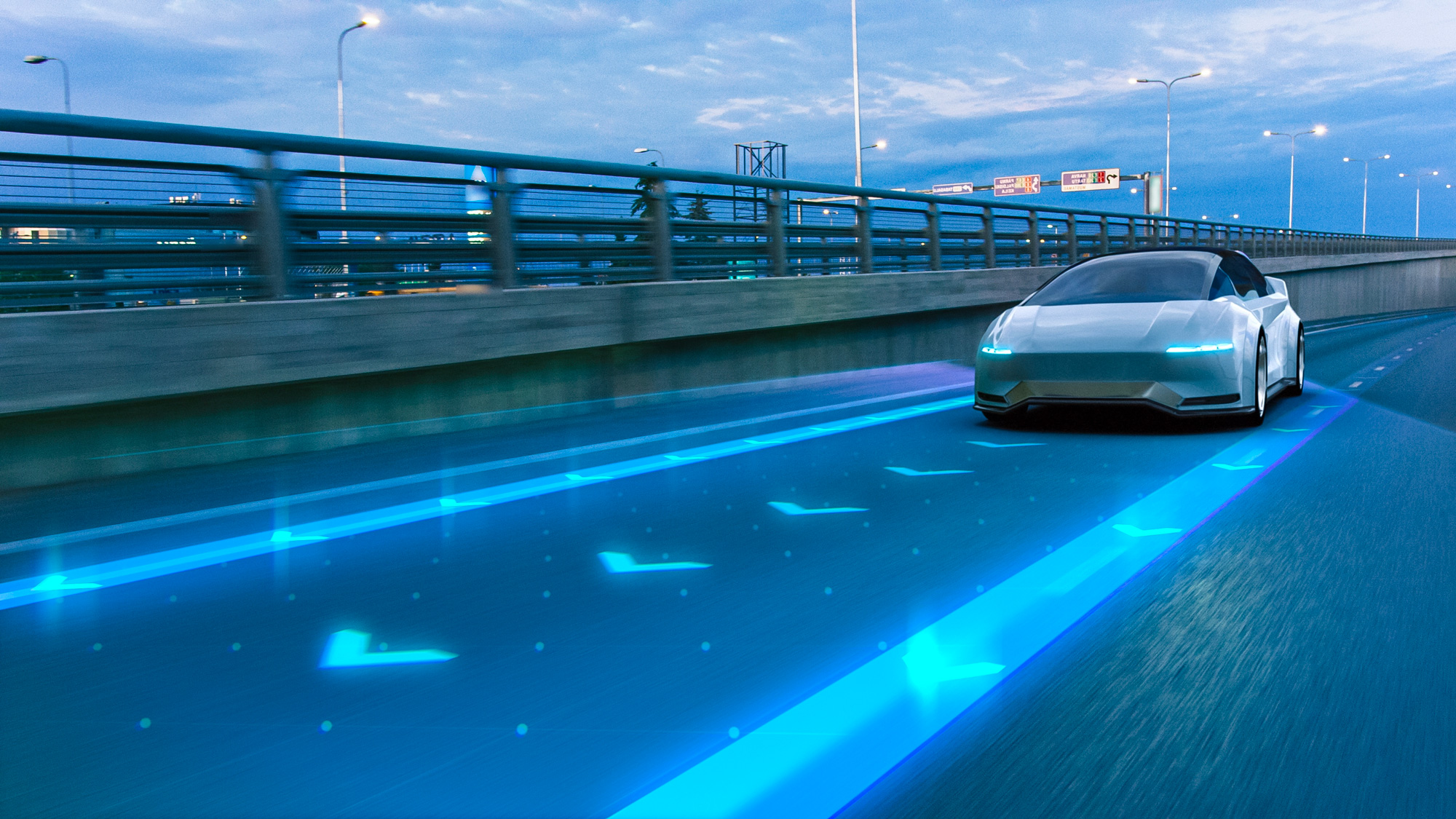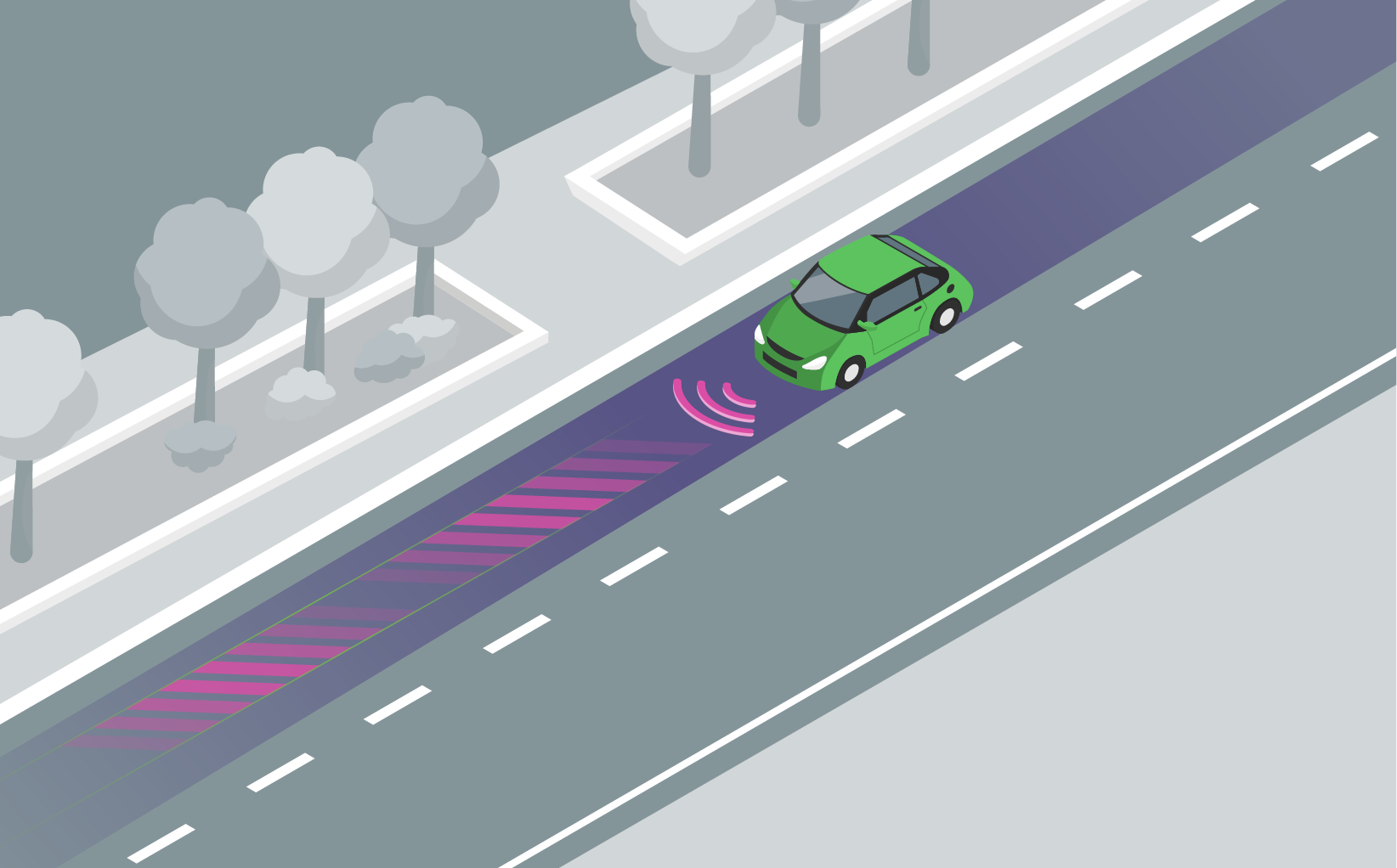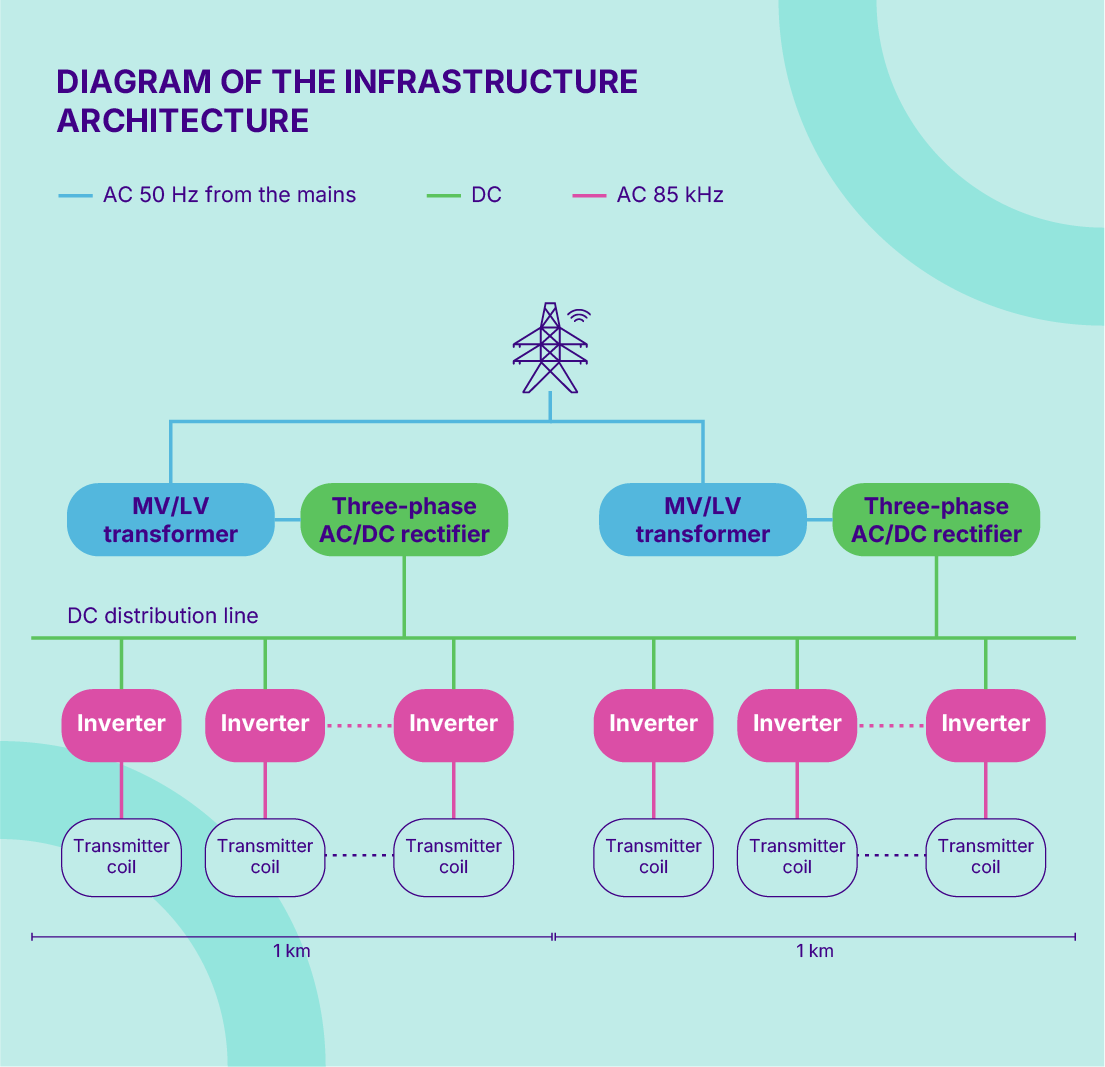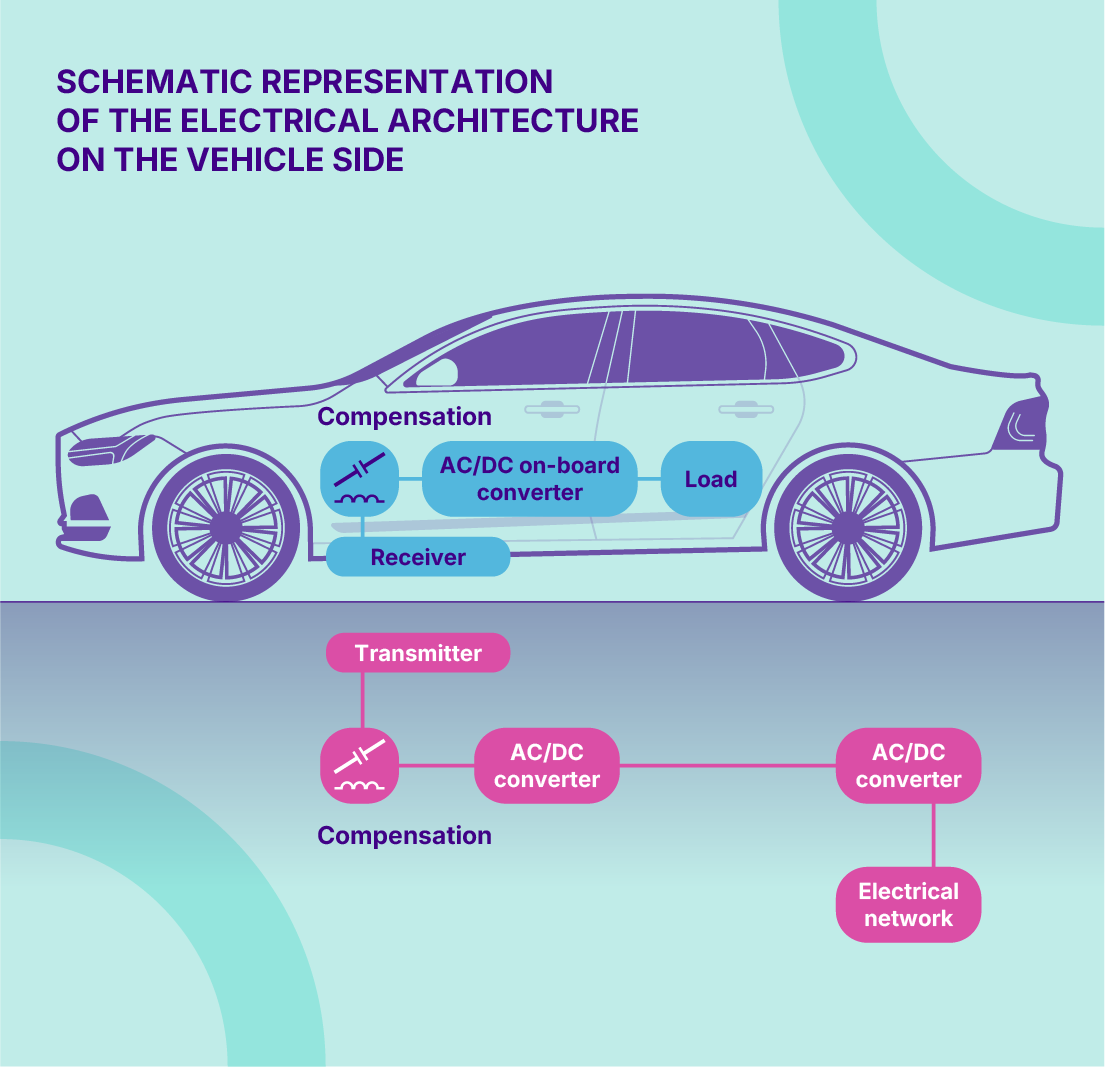
TREND > SMART MOBILITY
Dynamic inductive charging: a possible driver for electric mobility on highways
Invisible charging systems installed under the road surface could overcome the limited range of electric vehicles, thus helping to make electric mobility more accessible for long distance travel.

Electric vehicles promise to be the solution to one of the biggest challenges of our time: greenhouse gas emissions. Scientific research and industries are working to implement new technologies that can make Battery Electric Vehicles (BEVs) as accessible and functional as conventional vehicles. However, the limited driving range of these vehicles and the long charging times – far longer than conventional refueling – represent a barrier to the transition to electric mobility.
Movyon is investing in research and development into a very promising solution in this area, the “charge-while-driving” approach, based on wireless induction technology. A suitably equipped vehicle can receive energy to charge the battery while driving in a special charging lane.
The electrical architecture of the infrastructure
The hardware architecture of the Dynamic Wireless Power Transfer (DWPT) system is represented in Figure 2.
Generally, each charging section is 1 km long and is served by a dedicated electrical system. The size of the individual coils and the distance from one to the next are calibrated to allow uninterrupted vehicle/infrastructure coupling over the whole charging section.
The electrical architecture is designed to provide each passing vehicle with the energy needed to partially compensate for the energy demand for traction. As a result, any electric vehicle can travel on a section equipped with DWPT technology almost without battery consumption.


The electrical architecture of the vehicle
The electrical architecture on the vehicle side is simple (Figure 3). It is sufficient to install one or more receiver coils under the vehicle to provide electromagnetic coupling with the transmitter coils located under the road surface. Filters and electronic converters are then added downstream of the receiving system so that it can be connected correctly to the load, namely the vehicle battery.
Possible scenarios: a case study on the A1
When it comes to complex infrastructures such as dynamic inductive charging, planning is crucial. Movyon developed a Decision Support System (DSS) to determine the number and lengths of the DWPT systems for each highway. The DSS exploits real traffic data to simulate different scenarios. Different combinations were tested on the main Italian highway, the A1. For example, by assuming a full electric vehicle penetration of 100%, the optimal infrastructure configuration shows that 57% of the vehicles would be able to complete their journey without the need to stop and charge at the service area, i.e. using only the dynamic charging infrastructure. This scenario would require 138 systems, for a total length of about 437 km per carriageway and would result in an estimated total energy demand of around 1.9 GWh per day, a truly significant requirement. The results of the case study revealed the great technical complexity of a DWPT infrastructure designed to support 100% electric highway traffic.
The DSS made it possible to demonstrate that DWPT represents a strategic opportunity to complement stationary conductive charging. In fact, it could make a decisive contribution to meeting future vehicle energy needs. In the future, an integrated approach that combines different charging solutions will be able to maximize service efficiency and continuity, making the system more flexible and resilient.
The benefits of charging while driving
Dynamic wireless charging can help increase electric vehicle adoption. One of its main advantages is reducing the number of stops required for charging, resulting in shorter total travel times. The presence of widespread energy support on the highway network could also decrease so-called range anxiety, the fear that the vehicle does not have enough charge to reach its destination. By installing DWPT systems, highway infrastructure operators can therefore promote the transition to electric mobility, thus triggering an ever-greater virtuous circle of supply and demand.
The obstacles to deployment of the technology
However, there are some challenges to implementing the system. The investment cost, first of all. The main players worldwide report that the cost of a DWPT charging infrastructure is over €2 million per km.
Moreover, there are currently no standardized practices for integrating transmitter coils into road pavement and maintenance procedures. In this regard, Movyon is working on developing an innovative system, with the aim of making installation easier and faster, and ensuring that the new infrastructure can be integrated with normal maintenance work.
The importance of integrated planning and design
Movyon is tackling the challenge of dynamic inductive charging with an integrated approach, developing software tools capable of planning effective construction and extending the charging infrastructure throughout the highway network. At the same time, it is developing innovative technological solutions to integrate the charging system into existing road pavements to minimize the impact on normal road operations.
Valerio Apicella, R&D Specialist

Research & Development
We collaborate with startups, research centers and universities, in Italy and abroad, to develop solutions that improve operational processes and introduce new features, making mobility more efficient, safe and sustainable. As the technology hub of the Autostrade per l’Italia Group, we are committed to developing advanced solutions for improving mobility, with applications ranging from motorways to urban infrastructure.